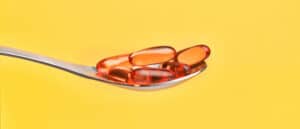Taking Too Much Vitamin D Can Threaten Your Health. And it’s Becoming More Common.
Around 42 percent of Americans have a vitamin D deficiency, according to the National Institutes of Health. Supplementing is generally a safe way to reap D’s antioxidant, anti-inflammatory, neuroprotective, and muscle-boosting benefits. But details of a British man’s recent vitamin D overdose published in the journal BMJ Case Reports is a cautionary tale against taking too much of the “sunshine vitamin”—something experts warn is becoming increasingly common.
The middle-aged British man heard about the supplement on the radio, then reached out to a private nutritionist. He started taking 150,000 international units (IU) a day at their recommendation, says Alamin Alkundi, Ph.D., a coauthor of the report and endocrinologist at William Harvey hospital in East Kent in the UK, who treated the man.
Within a month the man began to suffer from nausea, abdominal pain, and vomiting. He stopped taking the supplement, but his condition didn’t improve. Two months later and almost 30 pounds lighter, he was admitted to the hospital and diagnosed with hypervitaminosis D, the official term for vitamin D overdose.
The man was hospitalized for eight days and doctors treated him with drugs to lower the calcium levels in his blood. After a two month follow-up, his blood calcium levels returned to normal and while his vitamin D levels improved, they were still high.

How Much Vitamin D Do You Need?
The National Institutes of Health recommends adults get between 600-800 IUs of vitamin D daily.
You naturally get vitamin D from food or from regular exposure to sunlight—and it’s nearly impossible to get too much D from these sources, say experts. Taking megadoses of D supplements is almost always the cause of hypervitaminosis D.
Unlike water-soluble vitamins that your body excretes if you take too much, vitamin D is stored in the liver and fat cells until your body needs it. If you swallow too much of the supplement, it can build up to dangerous levels.
According to a 2017 study, three percent of American adults took more than the tolerable upper limit of 4,000 IU daily, putting themselves at risk for toxicity and side effects. About 18 percent took more than 1,000 IU daily.
The main consequence of taking too much vitamin D can cause calcium levels to build up in the blood (since vitamin D boosts calcium absorption). Hypercalcemia, as this condition is called, can lead to kidney stones, weaken your bones, and interfere with heart and brain functioning.
A Growing Trend of Taking Too Much D
The case study authors reported that while overdosing on vitamin D is still relatively rare, globally, more and more people are starting to take too much.
Previous data backs this up. A 2016 analysis of U.S. Poison Control data found over 25,000 cases of vitamin D overdose from 2000 to 2014. From 2000 to 2005, 196 cases of vitamin D overdose were found. Between 2005 and 2011 this number skyrocketed 1,600 percent to 4,535 cases.
Vitamin D levels are the most ordered lab tests due to growing awareness of vitamin D deficiency, according to a 2018 review of 10 studies. This review found that some people were taking up to 2,604,000 IU per day (over 3,000 times higher than recommended), but not because they were deliberately taking large doses of vitamin D. Rather, manufacturing errors and incorrect prescribing by doctors were to blame.
Vitamins
Ways to Get Vitamin D
Your body needs vitamin D for lots of things—including healthy bones, immunity, and sperm and T production. And while toxic levels are dangerous, getting too little D can be problematic too. Deficiency can cause loss of bone density, infections and immune disorders, high blood pressure, and even some types of cancers.
Besides taking appropriate levels of supplements if your doctor recommends it, try these healthy ways to avoid vitamin D deficiency.
Sun Exposure
A 2022 study says moderate sun exposure has a significant effect of making up deficiencies for those who lack vitamin D in their diet and is a simple and costless way to increase levels. To soak up the most vitamin D from the sun, head outside between 10:00 am and 3:00 pm—wearing sunscreen, of course.
Food Sources
Foods rich in vitamin D include fatty fish (salmon, swordfish, tuna), egg yolks, mushrooms, and beef liver, according to Harvard’s T.H. Chan School of Public Health. Orange juice, dairy products, and cereals with added vitamin D are also great choices.
UV Lamps
UV lamps are typically used to treat skin conditions (eczema, dermatitis, psoriasis), but a 2017 study found these lamps can improve vitamin D levels when used safely.












